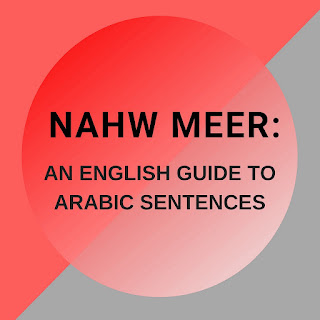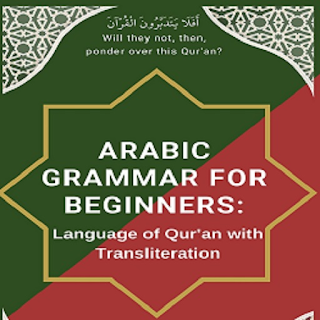Nahw Meer English: 1.0B - Introduction
بِسْمِ اللهِ الرَّحْمٰنِ الرَّحِيْمِ
Introduction
In the name of Allah, the Most Beneficent and Most Merciful, and peace and blessings be upon His noble messenger Mohammed Sallallahu alaihi wa Sallam.
Allah Subhanahu wa Ta’ala says in Surah 54 Al-Qamar, Ayah 32:
﴿وَلَقَدْ يَسَّرْنَا الْقُرْاٰنَ لِلذِّكْرِ فَهَلْ مِنْۢ مُّدَّكِرٍ﴾
meaning “And certainly we have made easy the Quran for remembrance, so is there anyone who will receive admonition?” And then Rasulullah Sallalahu alaihi wa Sallam said (Bukhari 4027):
خَيْرُكُمْ مَّنْ تَعَلَّمَ الْقُرْآنَ وَ عَلَّمَهٗ
meaning “The best amongst you are those who learn the Quran and teach it”. These have been some of my motivations to attempt this work in addition to my desire to learn and be able to read and better understand The Holy Quran.
Why this book? First, Allama Jurjani, the author of Nahw Meer, needs no introduction. His masterful book has been studied for centuries, including today in many schools in the Indian subcontinent and other parts of the world. Its original language is Persian and there are several translations in Arabic and Urdu, but very few in modern English. I have tried to faithfully translate the book into modern English with some re-organization and brief additional explanation.
What is Nahw? Ilm un Nahw is the science that teaches us how to join Nouns, Verbs, and Particles to form complete sentences and what the vowel of the last letter of each word should be.
This science started from the time of Omar bin al-Khattab RA when one of the Bedouins read part of the Ayah 3 of Surah At-Tauba:
﴿أَنَّ اللهَ بَرِئٌ مِنَ الْمُشْرِكِيْنَ وَرَسُوْلُهُ﴾
with a Kasrah at the end as in رَسُوْلِهِ instead of Dammah as in رَسُوْلُهُ. This changed the meaning from “that Allah and His prophet are free from (dissolve) obligations to the polytheists” to “that Allah is free from (dissolve) obligations to the polytheists and His prophet”. The Bedouin said if Allah dissolves His obligations to His prophet, so do I. After this incident, Omar RA ordered that the rules of Nahw be created.
Translation from one language to another is a task full of pitfalls. This is especially the case with Quranic Arabic which has words and sentences with deep meaning which may change depending upon the context and background of the revelation. I have tried to make the translation as simple as possible with details of all harakahs which I find to be lacking in books written by classical and Arabic speaking authors. For non-Arabic speakers, I found this to be an important point. Nahw is all about harakahs which determine the e’raab (vowels) at the word-ending in Arabic.
To benefit from this book, as a prerequisite the student needs to learn the science of word morphology Ilm us Sarf. This includes knowledge of the Arabic alphabets and words/vocabulary, and the 14 inflections that determine the status of a word concerning (male/ female), (1stperson/2ndperson/3rdperson) and singular /plural) status.
I would like to acknowledge and thank Mufti Rashid Mahmood Raja for his guidance and encouragement. May Allah SWT reward him immensely for his support.
May Allah SWT accept this humble effort and make it of use to those seeking to learn Nahw. I request all readers to please point out any mistakes and make suggestions to improve this work to the email below. Jazakumullahu Khair. I also ask Allah SWT to give us guidance, piety, chastity, and contentment and accept our efforts to learn and teach Arabic, Al- Quran, and His deen.
Mohammed Sajid Khan
West Bloomfield, Michigan
Email: sajid50@gmail.com
August 13, 2019
۞۞۞
Syed Al-Jurjani’s Introduction
بِسْمِ اللّٰهِ الرَّحْمٰنِ الرَّحِيْمِ
All praise is for Allah Subhanahu wa Ta’ala, the sustainer of the worlds. There are good consequences for the righteous, and peace and blessings be upon his best creation Mohammed Sallallahu alaihi wa Sallam, and all his followers.
Know that Allah Ta’ala will guide you. Indeed, this is a brief and intense book on Arabic sentence construction (field of Nahw). It becomes easier for a beginner student of Arabic to understand the formation of an Arabic sentence after memorizing the singular words, becoming familiar with the derivations of word morphology (field of Sarf), and memorizing the inflections. He achieves familiarity quickly with inflection/e’raab, its structure, and reading with Allah Ta’ala’s guidance and help.
Meer Syed Shareef Abul Hasan Ali Bin Mohammed Al Jurjani
۞۞۞




Comments